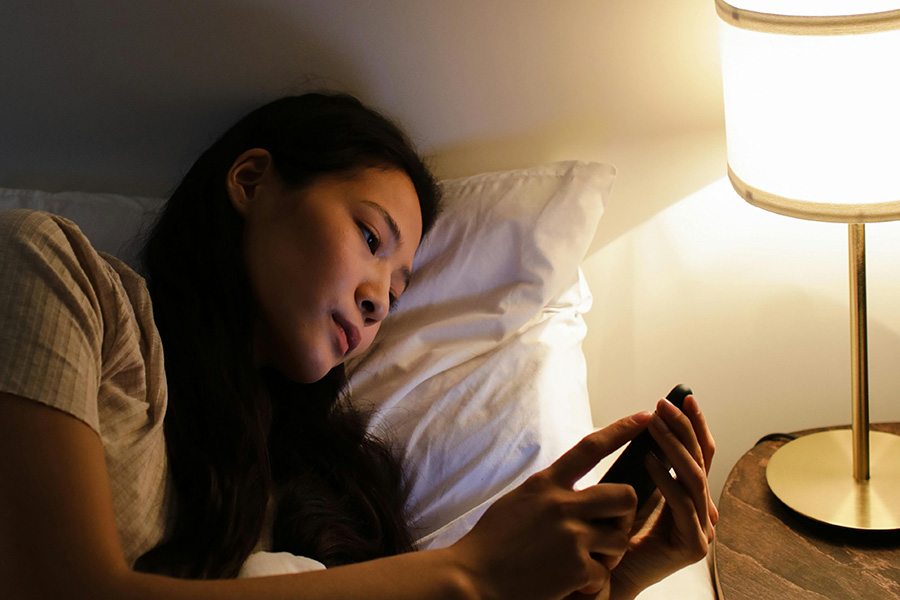Reading before bed is a cherished nighttime activity for many people. It can be a great way to unwind after a long day, providing a sense of calm and helping the mind transition into sleep. However, not all nighttime reading habits are created equal. Some can actually hinder your ability to fall asleep, while others can promote relaxation and enhance sleep quality.
At Sweet Sleep Studio, we often get asked about the best ways to incorporate reading into a healthy sleep routine. This article will explore how to read at night in a way that supports optimal sleep, including what to read, how to manage lighting, and how to structure your pre-bedtime routine to improve both the enjoyment of reading and the quality of your sleep.
Choosing the Right Material
The type of material you read before bed can greatly influence your ability to fall asleep. While some books are soothing and encourage relaxation, others can be too stimulating, causing your brain to remain alert instead of winding down.
Opt for Relaxing or Light Content
If your goal is to read as a way of relaxing before sleep, it’s best to avoid materials that are too mentally or emotionally engaging. Reading intense thrillers, mysteries, or complex nonfiction that requires deep concentration can activate your brain and make it harder to wind down.
Instead, consider:
Fictional works with a calm or uplifting tone: Light novels or stories with slower, peaceful narratives can help ease your mind.
Poetry or short stories: These are great for shorter reading sessions and don’t require a significant emotional or mental investment.
Gentle nonfiction: Books about self-improvement, travel, or nature can also be excellent choices if they’re not overly dense or intellectually demanding.
Avoid Work-Related or Overly Stimulating Content
Reading work emails, reports, or books that require focus or decision-making can prevent your brain from winding down. Similarly, material that evokes strong emotions—whether excitement, fear, or frustration—can elevate stress levels and keep you awake longer than planned.
Set Up Proper Lighting
The lighting you use while reading at night is another crucial factor for both your eye health and sleep quality. Exposure to bright or harsh light, especially blue light from electronic devices, can interfere with your body’s natural sleep-wake cycle, known as the circadian rhythm.
Use Warm, Low-Intensity Lighting
For nighttime reading, aim for dim, warm-toned lights. This kind of lighting mimics natural light during sunset, signaling to your brain that it’s time to prepare for sleep.
Best Lighting Options:
Dimmable bedside lamps: Lamps with a dimmer switch can help you adjust the brightness as you get closer to bedtime.
Warm-toned bulbs: Choose light bulbs with warmer hues, ideally in the 2000K-3000K color temperature range. These are less stimulating to the brain than cooler, blue-toned lights.
Reading lights with adjustable brightness: Clip-on book lights or e-reader lights that allow you to control the brightness can be especially helpful.
Minimize Blue Light Exposure
Blue light, which is emitted by most screens, suppresses the production of melatonin, the hormone responsible for helping you fall asleep. If you prefer reading on a device rather than a physical book, you should take steps to minimize your exposure to blue light.
How to Reduce Blue Light
Use e-readers with backlit displays that mimic paper: Devices like Kindle Paperwhite or other e-ink readers offer a more sleep-friendly reading experience compared to tablets or smartphones.
Enable “Night Mode” on devices: Many smartphones, tablets, and e-readers have a built-in night mode, which shifts the screen’s color temperature to warmer tones.
Invest in blue light blocking glasses: If you’re reading on a screen, wearing these glasses can help filter out blue light, reducing its impact on your sleep cycle.
Set a Time Limit
It’s easy to get caught up in a good book, but staying up too late reading can leave you sleep-deprived. Creating a boundary between reading time and actual sleep time helps signal to your brain that it’s time to rest.
Establish a Reading Routine
Set a consistent time limit for your nighttime reading, whether it’s 20 minutes or an hour. This will help you create a structured bedtime routine that tells your brain it’s time to wind down and prepare for sleep.
Use a Bookmark or Timer
A simple way to avoid “just one more chapter” syndrome is to use a bookmark or set a timer on your phone. Setting clear boundaries can help you stop reading at a reasonable hour and avoid sacrificing sleep for extra pages.
Relax Before and After Reading
It’s important to consider the activities you do before and after reading. By creating a full wind-down routine, you can enhance the calming effects of your reading session and ensure that your body and mind are fully prepared for sleep.
Unwind Before Reading
Before you start reading, it’s helpful to engage in calming activities that signal to your body that it’s time to relax. Consider practices like light stretching, deep breathing exercises, or taking a warm bath before you begin your reading time.
Transition Gently After Reading
Once you’ve finished reading for the night, it’s beneficial to follow up with a calming activity, such as journaling or listening to soothing music. This helps solidify the relaxation process and ensures that your brain and body are primed for sleep.
Reading at night can be a wonderful addition to your sleep routine, as long as it’s done mindfully. By choosing the right material, setting up sleep-friendly lighting, and managing your reading time, you can enjoy the benefits of relaxation while still preserving the quality of your sleep. Establishing a consistent bedtime routine that includes reading can help you create a peaceful and restful transition into sleep, setting the stage for better rest and overall well-being.
Reading before bed can often lead to a good nights rest, but if you’re having sleep difficulties, please call Sweet Sleep Studio at (913) 309-5963. We are here to assist in your efforts to sleep well.




